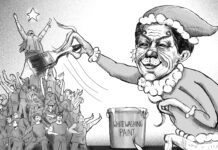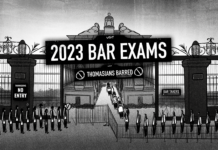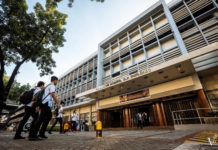FRIARS or brethren of the Order of Preachers, or the Dominicans, have much to be thankful for their order having reached its eighth centenary.
Their father, St. Dominic de Guzman, would be proud of the achievements of his sons, especially since the reform and renewal of the Church since the medieval ages have always been associated with the mendicant friar orders of which the Dominicans, along with the Franciscans, Carmelites, and Augustinians, are at the forefront.
His pride should extend to the whole Dominican family—not only friars, but sisters and nuns as well as the Third Order and lay confraternities.
We have no statistics but the Dominican religious family is arguably the biggest in the world. In Communist Vietnam alone, the Church is kept alive by the 40,000 Third-Order Dominicans, the biggest in the world.
Dominican achievements have been extensive and pervasive. The reform movement led by the mendicant friars totally renewed the Church in the high middle ages, resulting in the rehabilitation of the papacy and the unleashing of new spiritual energies that saw the establishment of the universities, which may be Europe’s most shining legacy to the rest of the world, after, of course, Latin Christianity.
We in the University of Santo Tomas should be aware of that legacy; we bask in it, thrive in it, and advance toward the future by drawing resources from it, nothing less than the vision and wisdom of the ages.
There may be older educational institutions in Asia than UST (perhaps the Mandarin schools of China are older; or Vietnamese Buddhist schools; or even Indian Hindu monastery-schools). But when one talks about higher education, one talks about the “university,” and the only university in Asia at the turn of the 20th century was UST, a European university through and through.
Pope Benedict XVI, himself the product and perhaps one of the summits of European education (as Joseph Ratzinger, he was professor at Regensburg before he was named archbishop of Munich and Freizing), in his video message to the UST Quadricentennial Mass in 2011, declared that UST was the oldest university in Asia, barring none.
The world of the university reflects the universe of the natural and the supernatural, of civil and sacred concerns. All of this is embodied in UST’s quite extensive curricular offerings that remain true to classic liberal education while also taking consideration developments in the natural and social sciences.
In any case, UST mirrors the richness of Philippine history: the founders of the Philippine nation and republic came from its portals.
Even before that, Dominican thinkers who acquired their degrees from UST became world-class philosophers and theologians, becoming cardinals and prelates and key advisers to popes and potentates.
Dominican achievements have been far and wide, but for now let’s express thanksgiving at the peculiar Dominican achievement of having founded and sustained UST, the cradle of higher education in Asia.













